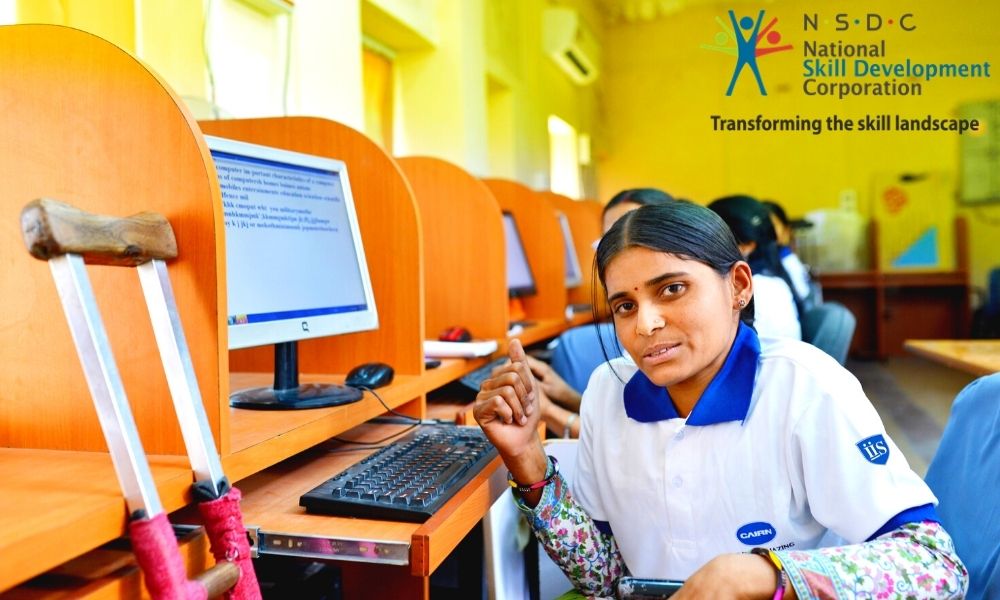
Skilling Women To Bridge Gender Pay Gap In India
Delhi, 23 Dec 2020 11:56 AM GMT | Updated 1 Jan 2021 3:06 PM GMT
Creatives : Kumar Vibhanshu
I believe that everyone has a story to tell, all you have to do is listen. I like learning new things and believe that there can never be an end to learning, and the biggest room in this world is the Room for Improvement. Seekhte Raho........
Building and nurturing a conducive ecosystem where women across formal and informal sectors are provided appropriate employee benefits and a healthy working environment is crucial.
According to Economic Survey 2019-20, 60% of Indian women between 15-59 years of age are engaged in full-time household work. Using data from the Periodic Labour Force Survey (PLFS), the report shows that the female labour force participation (FLFP) rate has been declining since 1993-94. Latest available data suggests that this trend has continued till 2017-18. Research conducted by World Bank also shows a similar downturn. Many Indian women are either not joining the workforce or are dropping out at an unprecedented rate, primarily because of unfavourable social norms, familial commitments, terms of employment, working conditions, limitations with respect to mobility, and hiring practices. Income disparity and poor job opportunities have aggravated this situation even further.
Global Gender Gap Report 2020 by World Economic Forum notes that India has one of the lowest female labour force participation (FLFP) rate in the world and ranks 145 out of 153 countries. According to the Consumer Pyramids Household Survey 2018 conducted by Centre for Monitoring Indian Economy (CMIE), the median monthly income of women in India is 43% lower as compared to that of men. Interestingly, the income gap for individuals working in the Information Technology (IT) sector is significantly lower at 12.6%. The picture so far makes one thing clear – the gender pay gap is a critical issue that needs to be addressed through planned and targeted interventions.
Despite an increase in gender parity in terms of falling fertility rates and higher educational attainment among Indian women, the sharp and unceasing decline in women's workforce participation in rural India and stagnancy in urban India remains a challenge. A preliminary IANS-CVoter Economy Battery survey revealed that Indian women have already lost more jobs than men during the COVID-19 pandemic.
With India striving to become a $5 trillion economy by 2025, we cannot afford to leave half of our productive workforce behind. The unwitting systemic exclusion of half of our talent pool, thinking minds and labouring hands does a disservice to our National interests. We must stand united to break social barriers, build supportive infrastructure and invest in relevant skilling to ensure long-term livelihood opportunities for women. Pursuant to this, we need to have robust policies and measures in place to ensure gender inclusivity, a condition that will be instrumental to fulfilling the vision of 'Aatmnirbhar Bharat'.
Building and nurturing a conducive ecosystem where women across formal and informal sectors are provided appropriate employee benefits and a healthy working environment is crucial. We should work towards the diversification of jobs to ensure skilled women are a part of the workforce and that skilling programs are effective in generating employment in urban as well as rural areas. The adoption of a gender agnostic approach in developing vocational education and training courses coupled with a gender disaggregated strategy will help immensely in gender mainstreaming across the country. But the job does not stop at training women to be industry read, we must go a step further and bake retention and confidence boosting strategies into our policies and interventions. This will help women explore opportunities with fair wages to bridge the gender pay gap.
In the last few years, inspired by Hon'ble PM Narendra Modi's vision of making India the 'skilling capital of the world', NSDC has rolled out various programs to inspire women across the country to embrace skill development for self-reliance and financial independence. The rapidly improving/world-ready skilling ecosystem in India, owing to expanding infrastructure and positive policy interventions on the part of the government and allied partners, has helped bolster women's trust in an India that espouses gender parity in spirit and praxis. Under the government's flagship scheme, Pradhan Mantri Kaushal Vikaas Yojana (PMKVY), which provides training in a diverse array of skills and trades including beauty and wellness, healthcare, fashion design, business management, electronics, artificial intelligence, data analytics and 3D printing amongst others, almost 50% of the candidates trained are women. Through these programs, aspiring female professionals have been making great strides in every field, while also inspiring their peers from diverse backgrounds to accomplish their goals. Going forward, in addition to increasing the number of women trained, we aim to direct our efforts towards bridging the learning-to-livelihood gap. Skill India Mission is committed to equipping women with market-relevant skills and bridging the gender pay gap to help them claim their rightful place in the workforce, and give voice and expression to their aspirations.
Also Read : Uttar Pradesh: Single-Use Plastic Waste To Be Used For 1500 Km Road Construction
 All section
All section














